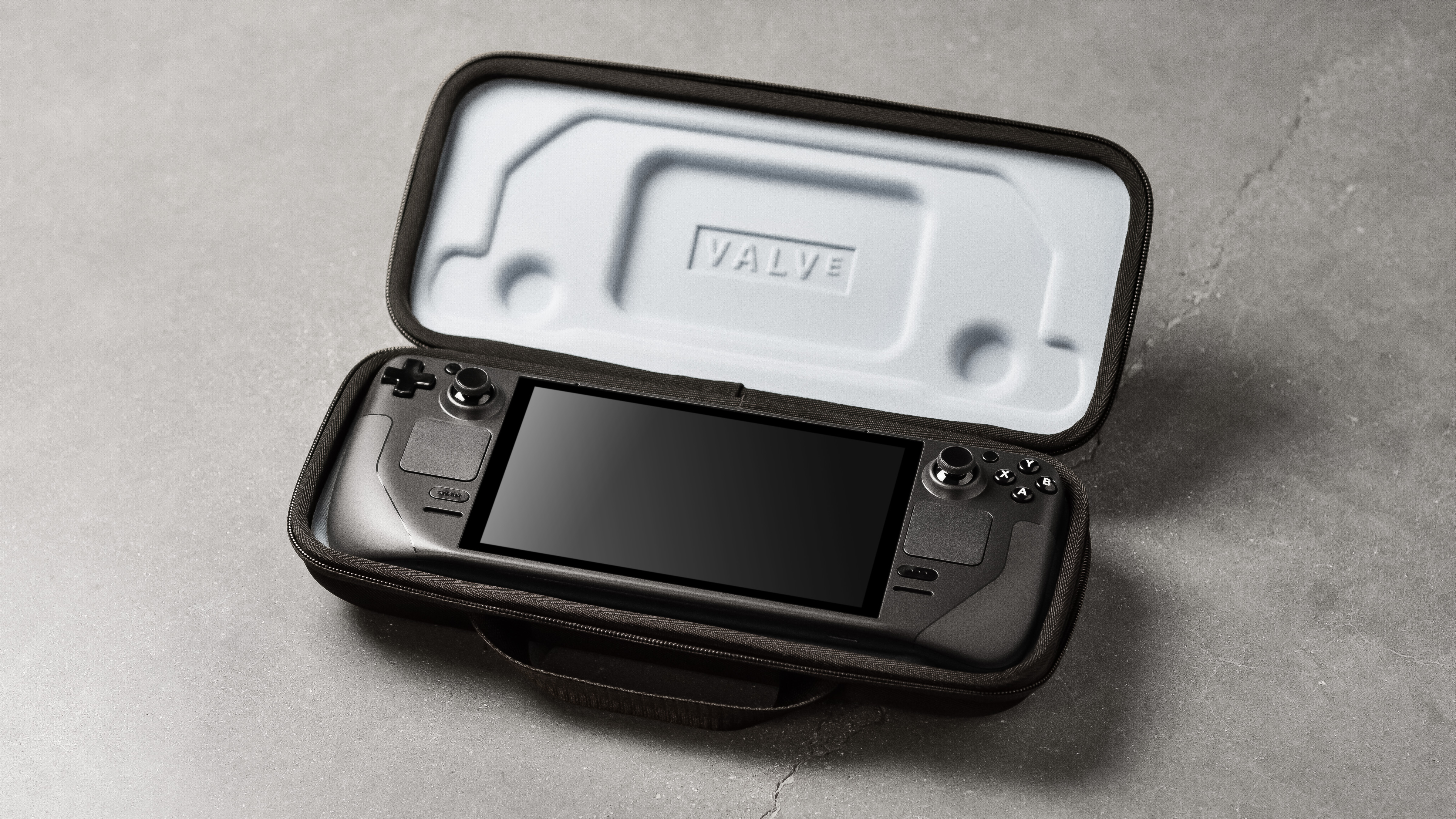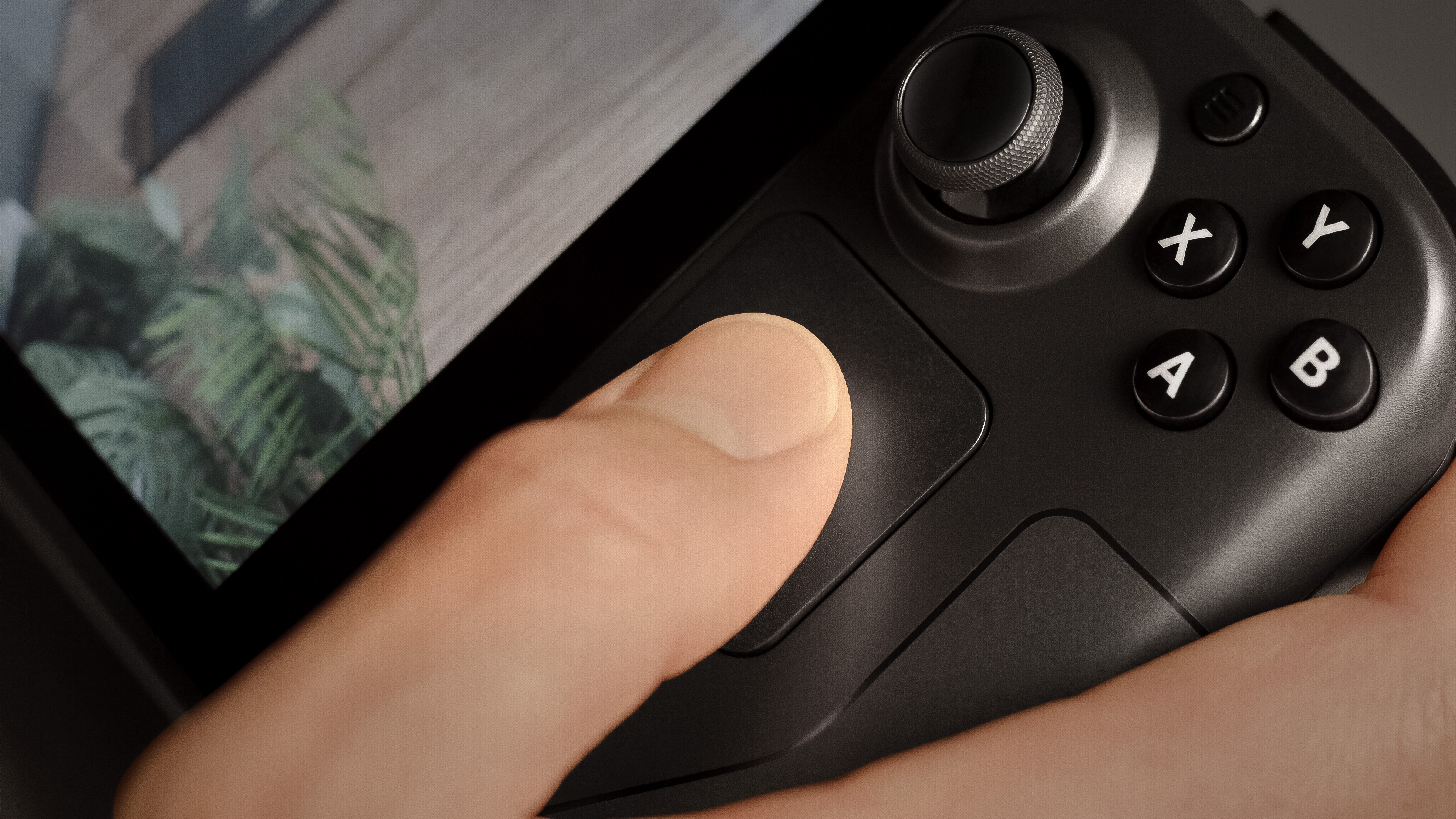Steam Deck: what sort of gaming performance can we expect from Valve's handheld PC? | PC Gamer - porternoust1988
Steamer Decorate: what screen out of gaming performance can we expect from Valve's handheld PC?

It's been inferior than 24 hours since Valve announced the Steam Adorn, only what a busy period it has been. The PC gaming hand-held has made quite a splash online and has already worked its magic trick on some members of the team as they look to ditch their Nintendo Switch. Merely the first question on my mind when I heard Valve's portable plan was in regards to technical school spectacles: What is going on below the hood to make this happen? So therewith in mind, let's diving into the Steamer Deck's atomic number 14 heart to determine what's going on and how it might compare to now's components.
What powers the Steam Deck hasn't been ripped directly out of Gabe Newell's imagination. Instead, it's built by a accompany that's, aver, a trifle recovered-known in the gaming industry today: AMD.
The AMD central processor explained
The Steam Floor APU (AMD's condition for a Processor/GPU combo) uses AMD's Dot 2 Mainframe computer architecture and RDNA 2 GPU architecture. What this way is that the processor component part is similar to AMD Ryzen 3000-series processors on screen background (introduced in 2019), while the GPU component is a match for the Radeon RX 6000-series artwork architecture (introduced in 2020).
We do stimulate to constitute a little careful with such comparisons, however. At that place are no chips which are the exact mirror-image of the APU found in the Steam Deck of cards today. Desktop counterparts, such Eastern Samoa the Radeon RX 6700 XT graphics circuit board, have many more cores inside them than the Steamer Deck can offer. Similarly, the Xbox Serial X/S and PS5 utilise the verbatim same CPU and GPU architecture, although once more are far-off from a match numbers-Stephen Samuel Wise.
There's no direct apples to apples equivalence here.

The Steam Deck features a iv-core/eight-thread Pane 2 CPU. That's or s equivalent to the Ryzen 3 3100 CPU (a $99 budget desktop CPU), although the Steam Deck CPU runs a touch slower at 2.4-3.5GHz. That's credible a move to livelihood this chip within a fairly restrictive power envelope, thus extending battery life and minimising outflow demand—the whole AMD APU in the Steamer Deck requires hardly 4-15W of tycoo.
So there's the GPU factor; the main number one wood for the gaming know on the handheld. This is formed by ogdoad RDNA 2 Compute Units (CUs), making for 512 cores in absolute. The RDNA 2 architecture means each of these CUs will cost attended past an RT Core, which will nominally allow for ray tracing acceleration. Even so, such a slim total really won't bring off a great experience in any ray-traced lame.
This RDNA 2 GPU volition run at 1–1.6GHz and deliver busy 1.6 TFlops FP32 functioning. That is a general marking of this chip's compute performance, just once more isn't entirely comparable older operating theatre competitive GPU generations. Information technology's more of a guideline, Lashkar-e-Taiba's say. To get a better sense of how the Steam Deck will perform, we have to look at the other specs, overly.
The full Steamer Dump eyeglasses
To drive a more complete idea of how the Steam Pack of cards will do, we deman to looking at what else is inside of IT, especially the fancy new LPDDR5 memory, the subject of the side by side section.
| Steam Deck | |
|---|---|
| CPU | AMD Zen 2 |
| Core count | 4-core/8-meander |
| CPU clock speed | 2.4–3.5GHz |
| GPU | AMD RDNA 2 |
| GPU Figure out Units | 8 |
| GPU time velocity | 1–1.6GHz |
| RAM | 16GB LPDDR5 @ 5,500MT/s |
| Storage | 64GB eMMC / 256GB NVMe SSD / 512GB NVMe SSD |
| Display | 7-inch LCD touch screen |
| Resolution | 1280 x 800 |
| Refresh plac | 60Hz |
| Audio | Stereo speakers, 3.5mm jack, dual mics, USB Type-C/Bluetooth |
| Connectivity | Wi-Fi, Bluetooth, USB Type-C with DisplayPort 1.4 support |
| Battery | 40Whr |
| Size | 11.7 x 4.6 x 1.8-inch (298 x 117 x 49mm) |
| Weight | Approximately 1.47 lbs (669 grams) |
| Price | $399 (64GB) / $529 (256GB) / $649 (512GB) |
The LPDDR5 Random access memory explained
Connecting all the silicon together is 16GB of LPDDR5 RAM at 5,500MT/s. This new memory standard is quick, and outpaces most DDR4 remembering found in modern gaming PCs. While DDR5 will offer an even greater leap in performance, the lower-power racy LPDDR5 store noneffervescent offers frightful speeds.
Valve is offer a bright blend of speed and capacity in the Steam Deck, but that LPDDR5 memory is a bit of a wildcard. Information technology's sudden and there's plenty of information technology, but IT's also going to comprise divided between CPU and GPU and cannot offer the bandwidth that art-specific GDDR6 memory can, which you'd find on any modern discrete graphics card in laptop or background. Beaver State, perhaps more importantly, in some cabinet running a similar APU.

Steam Deck performance: the realistic expectations
With the general specifications in hand, we can at least begin to extrapolate rough performance figures for Valve's new device—bearing in mind everything I conscionable same about this non being a perfect science.
In terms of TFlops, the RDNA 2 chip inside the Steam Deck is a match for Intel's 96 EU Xe artwork, which is just about commonly found inside Intel Tiger Lake mobile processors. Intel's GPU offers betwixt 1.7 and 2.1 TFlops of FP32 performance, then a touch higher than the RDNA 2 kick in the Steam Deck, but it's worth mentioning that the RDNA 2 architecture is built first and foremost for gaming and has shown itself plenty capable of more making up for raw compute power when it comes to frame rates.
If you're happy to run your games on miserable to medium settings at 720p to hit 30-60 fps, then the Deck should give birth.
Lucky for us, we've not only reliable Intel Tiger Lake's 96 EC iGPU, our own Alan Dexter has taken said GPU for a spin in another Microcomputer play handheld, the Uncomparable-netbook Onexplayer.
The Onexplayer also comes with a four-core CPU with capable octad threads, 16GB of slower DDR4 Crash, and that 96 EU Intel Xe GPU. So it's as neat a gibe-up as we're going to get.
The Onexplayer manages to offer 35 fps in Tincture of the Tomb Spoiler at 720p and with low artwork settings. In GTA V, that increases up to 60 fps, which isn't too repentant the least bit. Alan reports further success in games such as Dirt Rally, Forza Horizon 4, and low-impact games such as Hearthstone or Magic The Gather: Fiel.
Cyberpunk 2077 was, of course, stunned of the head.
Matchless issue Alan notes in his Onexplayer inspection might also be something we encounter with the Steam clean Deck, and that's getting games to endure at the inborn 1280 x 800 resolution, or 16:10 aspect ratio. IT's far more likely for games to sustain a 16:9 720p resolution, and you may find games run that pocketable bit better at that size, too.
Conclusion
Sir Thomas More nebulous concepts of performance would say this is just about equivalent to the PS4 or Xbox One, although that's a slightly more difficult equivalence As console games don't often offer frame rate counters and the same. In terms of raw Cu bet, the Steam clean Deck of cards is good low-level half the spec of the Xbox Series S, although, again, at that place are all sorts of memory and other architectural changes you'd need to consider to pronounce anything of value there.
To know anything certainly, we'll have to get a Steam Deck to benchmark for ourselves (we're working connected it). A specs list just can't give us the whole mental picture, but we can say a few things pretty confidently. Is the Steam clean Embellish going to crush in the current games? No. Is it going to drive the Valve Index in VR? No. Is information technology possibly a great way to play PC games in bed operating room on the train? Hell yeah, it looks like information technology.
The Steamer Deck ISN't quite the "powerhouse" Valve claims it to be, just if you'Re happy to run your games on low to medium settings at 720p to hit 30-60 fps, then it should get you happily playacting PC games inaccurate from your desk—at least while the 40Whr battery lasts.
Source: https://www.pcgamer.com/steam-deck-performance-expectations/
Posted by: porternoust1988.blogspot.com



0 Response to "Steam Deck: what sort of gaming performance can we expect from Valve's handheld PC? | PC Gamer - porternoust1988"
Post a Comment